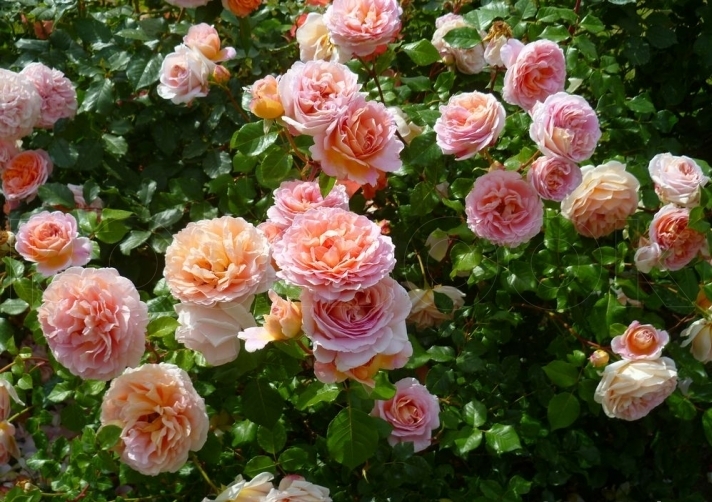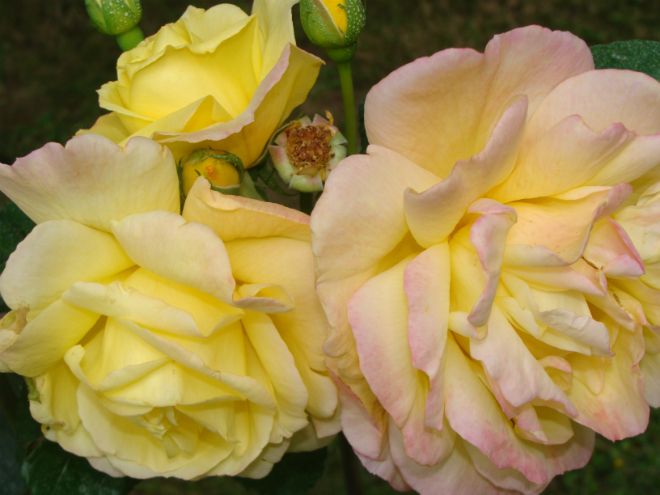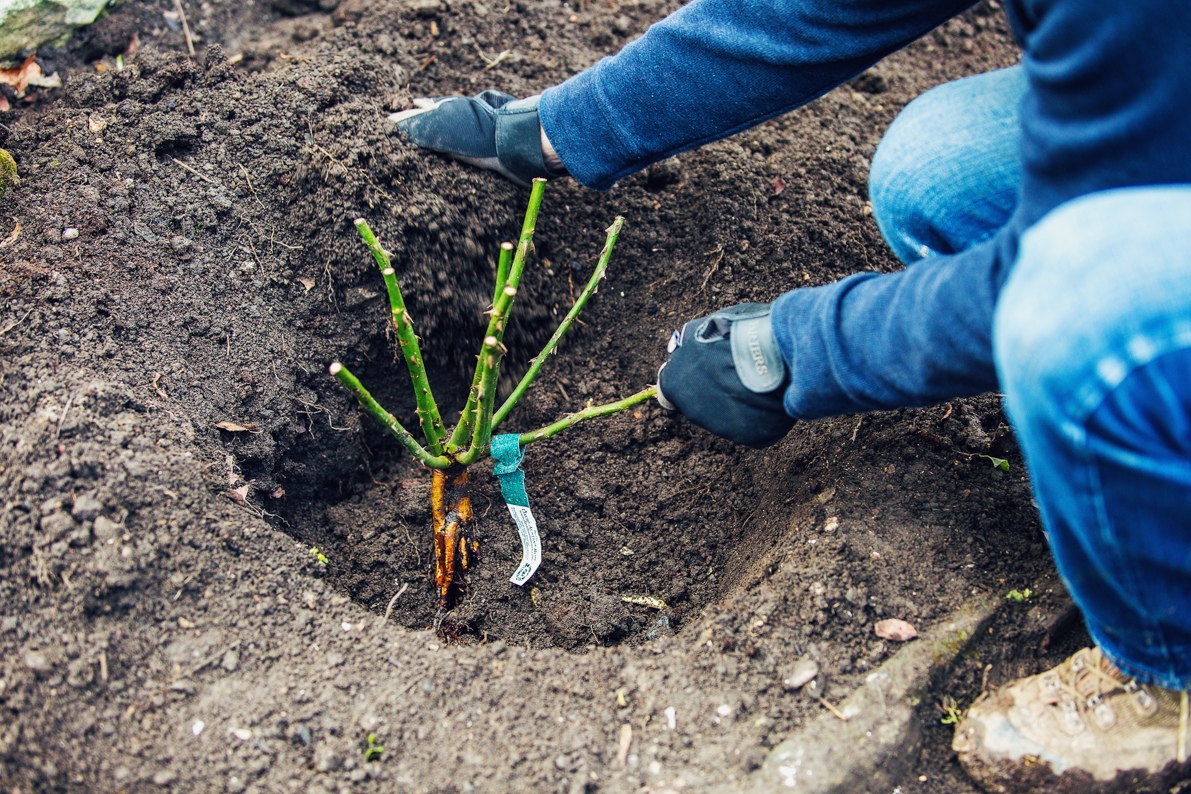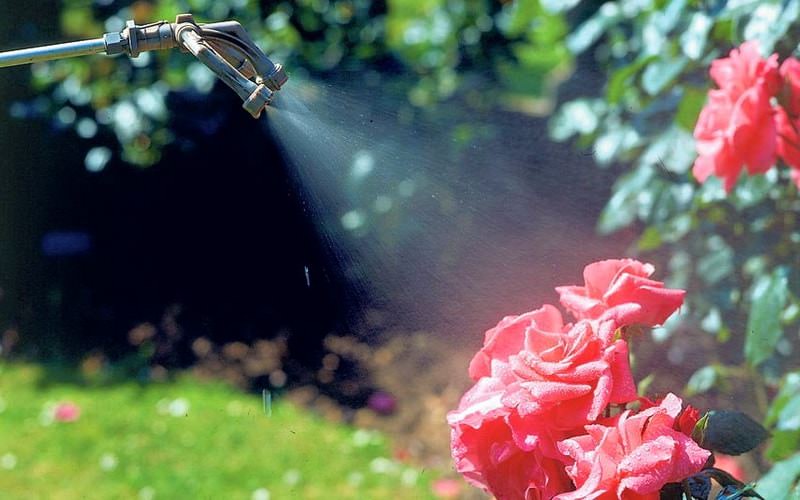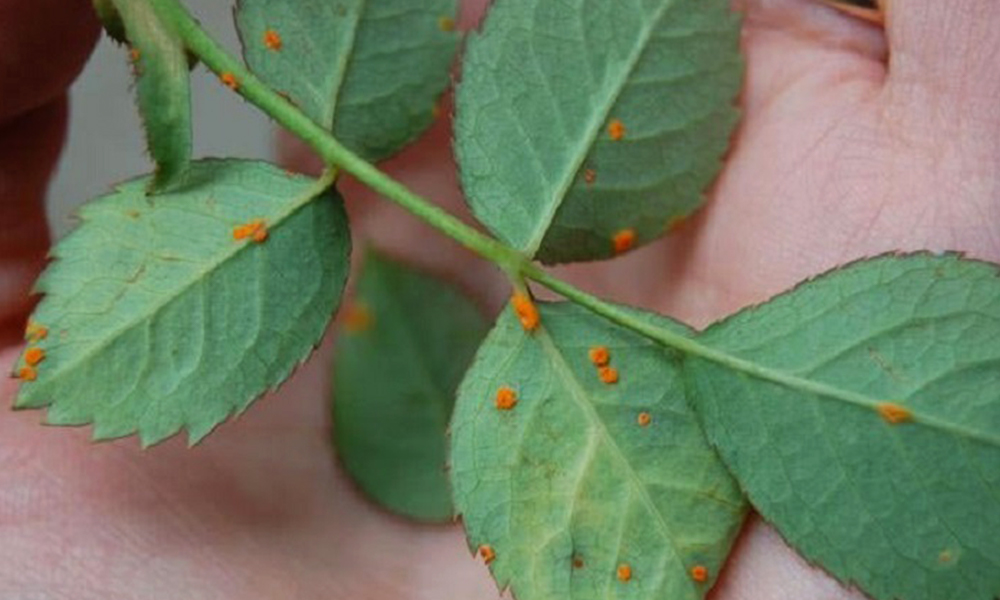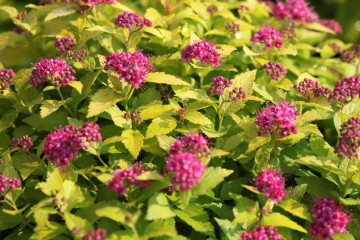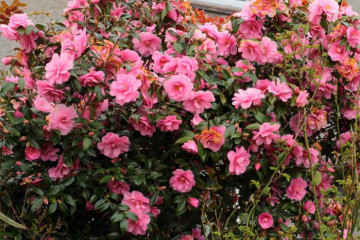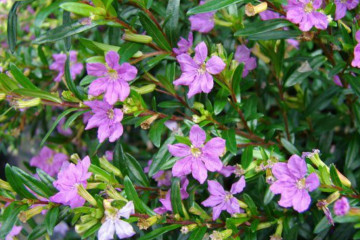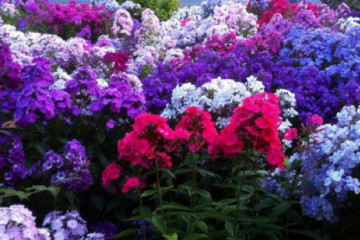Park rose: planting and care in the open field
Content:
Ornamental shrubs of a garden rose are known to everyone. They take root well in various soils and have a wide palette of various shades (from red to apricot). This article will tell you in detail about such a garden favorite as a park rose, planting and caring for which in the open field has its own characteristics.
Growing park roses outdoors
Caring for and growing park roses is based on choosing the right variety, the right planting time and the implementation of all the necessary recommendations. Shrubs reach a height of 3 m, they are frost-hardy and tolerate a hot climate well.
Park roses are planted throughout Russia, as they are popular due to their large number of advantages. They are used to compose flower arrangements and as single copies when decorating a hedge, fence, ennobling a summer cottage.
Popular varieties
The popularity of certain varieties of park roses is due to the following characteristics: frost resistance, immunity to diseases, pests, high temperature tolerance.
The most famous varieties of this crop are discussed in more detail below.
Varieties of Canadian park roses
List of popular varieties of Canadian park roses:
- Prairie Joy. The classic rose variety is intended for decorating a hedge or for ennobling summer cottages. During the period of its flowering, buds appear, collected in a brush of 6 pieces, warm orange color. The plant is very resistant to severe frosts.
- Morden Sunrice. The representative of this variety has an average height of up to 1.5 m and a width of up to 0.7 m. The frequency of flowering is 2 times in the summer. The buds are large, bright orange.
- John Franklin. A shrub of small height - up to 1 m. Single buds are red in color with a pronounced floral aroma. The plant is resistant to frost, drought and has high immunity against diseases and pests.
- John Davis. This variety is ideal for successful cultivation in the Moscow region. The plant can bloom before the first frost. The shrub reaches a height of 2 m. Buds of a pale purple color are collected in inflorescences of several pieces.
Varieties of English park roses
List of popular varieties of English park roses:
- Chippen dale. A relatively new variety of park roses, which has a large number of advantages (resistance to heat, frost, various diseases, unpretentious care).
- William Shakespeare. A variety of park roses, which was bred in 2000. Flowers are pleasing to the eye throughout the season. The plant is frost-resistant, tolerates heat well and is resistant to pests and ailments.
- Benjamin Britten. A shrub of medium height, which blooms densely with large red buds with a pronounced floral aroma. The plant is ideal for decorative purposes.
- Abraham Darby. Shrubs of this variety grow quickly, are resistant to diseases, bloom 2 times during the season with large flowers of warm orange color with pink color at the ends.
Other varieties
Other popular varieties of park roses:
- Variety Westerland. Used to create a hedge. The plant blooms densely 2 times a season with large peach-colored flowers.It tolerates frost, heat well and does not require constant maintenance.
- Louis Audier. A shrub up to 3 m high. The flowers are shaped like peonies and are light pink in color. The plant is used to create a classic English, French landscape.
- Rose Chinatown. Medium-sized shrub. Flowering frequency - 2 times throughout the season. The flowers are large, classic, yellow. The plant is frost-resistant, immune to pests and diseases.
How to properly plant and care for park roses outdoors
In order to properly plant and grow a park rose for a beginner, you must follow simple recommendations:
- Choosing the right landing site. The absence of strong sun and the presence of light shade are encouraged.
- Creation of favorable soil for planting. Humus, friability, loaminess provide a dense and abundant flowering in late spring and throughout the summer.
- Applying the correct fertilization in case of poor soil (rotted compost with sand in an equal ratio).
- Before planting, the roots of the seedling are not kept in water, since excessive dampness can cause various diseases, for example, powdery mildew.
Preparation for planting a seedling in open ground:
- The roots are cut by 1-2 cm.
- Remove dried, damaged shoots.
- No more than 4 buds are left on the shoot.
- Before planting, the seedlings are slightly moistened with water.
Planting is carried out in previously prepared holes with fertilizer. The roots are placed in them and covered with earth. Then the first watering is carried out.
Step-by-step execution algorithm:
- hole preparation (diameter - 40 cm, depth - 70 cm);
- introduction of drainage (expanded clay, pebbles, clay, broken brick) and fertile soil;
- seedlings are placed in prepared holes;
- cover with earth from above and watered with warm water (about 15 liters);
- seedlings are spud with peat at least 20 cm thick.
The distance between the planted crops should be at least 1 m, since shrubs can harm each other when they grow.
How to care for an established plant
Recommendations for the proper care of park roses that have already taken root in the open field:
- In the spring, roses need abundant and long-term watering. With the onset of heat, the procedure should be carried out 2-3 times a week (late evening or early morning). Water must be shed at the very roots.
- After watering, the soil is loosened in order to ensure air circulation. It is also necessary to carefully remove weeds in parallel.
- Mulching (that is, the introduction of organic materials with a thickness of at least 5 cm). The procedure is best done in early spring or early fall.
- Roses are fertilized throughout the season (7-10 times) with the use of organic fertilizing, mineral composition (potassium salt, ammonium nitrate, superphosphate).
- Pruning should be done annually to improve growth and long-term flowering of the shrub. The procedure is performed at different times of the year and is divided according to the degree of intensity (enhanced, medium, weak). The kidneys are removed taking into account the level of 3.5, 10 kidneys, respectively.
- The cuttings are specially pinched to the stems with the first petal for the correct formation of the shrub and ensuring a dense, abundant flowering throughout the year.
- The first pea-sized buds after planting are removed to improve plant growth.
- The pinching procedure promotes the development of new stems and the formation of a symmetrical rose bush. It is completed at the end of summer before the onset of autumn.
Bushes with shoots are dug up by the roots and planted in another suitable place. At the same time, all conditions are created, properly looked after, so that the plant quickly takes root.
How park roses bloom
The blooming of park roses is quite long, throughout the season. The first bud may bloom at the end of spring. During this period, it is important to ensure proper plant care:
- during the first year after planting with mineral fertilizer, the rose does not need additional feeding;
- further feeding is done regularly according to the established schedule;
- after pruning in the spring, fertilizing is carried out and the procedure is repeated at the first set of buds before their flowering (ammonium nitrate - 30 g per 1 sq. m, sodium humate at the rate of 2 liters of ready-made solution per 1 shrub);
- when the first flowers have faded, you need to feed the culture with mineral fertilizers (only potassium, superphosphate can be used, nitrogen is excluded);
- the maximum watering of the plant is carried out during the budding period (5-10 liters per 1 bush).
Diseases and pests
The cultivation of roses is also accompanied by the appearance of various diseases:
- Powdery mildew affects the plant mainly in summer and can appear outdoors and in the greenhouse. On the shoots, leaves, a white bloom appears, which gradually turns brown. The shrub begins to disappear, dry out. To eliminate it, it is important to carry out a special treatment with fungicides.
- The appearance of rust from the spores of the fungus on the leaves and shoots of the plant.
- Black spots may appear on rose leaves in late August.
- Pink rust (orange pads). The disease develops rapidly and requires treatment with insecticidal substances.
- Rust with asterisks often appears on rose leaves in summer. With the further development of the disease and the absence of preventive measures, the plant turns yellow and disappears.
Pests that harm park roses: rose borer, aphid, broomstick, rose cicada, leafworm, spider mite, click beetles. Methods of dealing with them are timely feeding, proper watering, regular loosening, mulching of the soil. If the disease is already progressing, then treatment with insecticides for a specific purpose is required.
If you provide the park roses with proper care, then they will delight the gardener with a lush bright flowering, a wonderful aroma throughout the warm season. To do this, you need to water them generously, instantly respond to the appearance of signs of disease, and prune.


